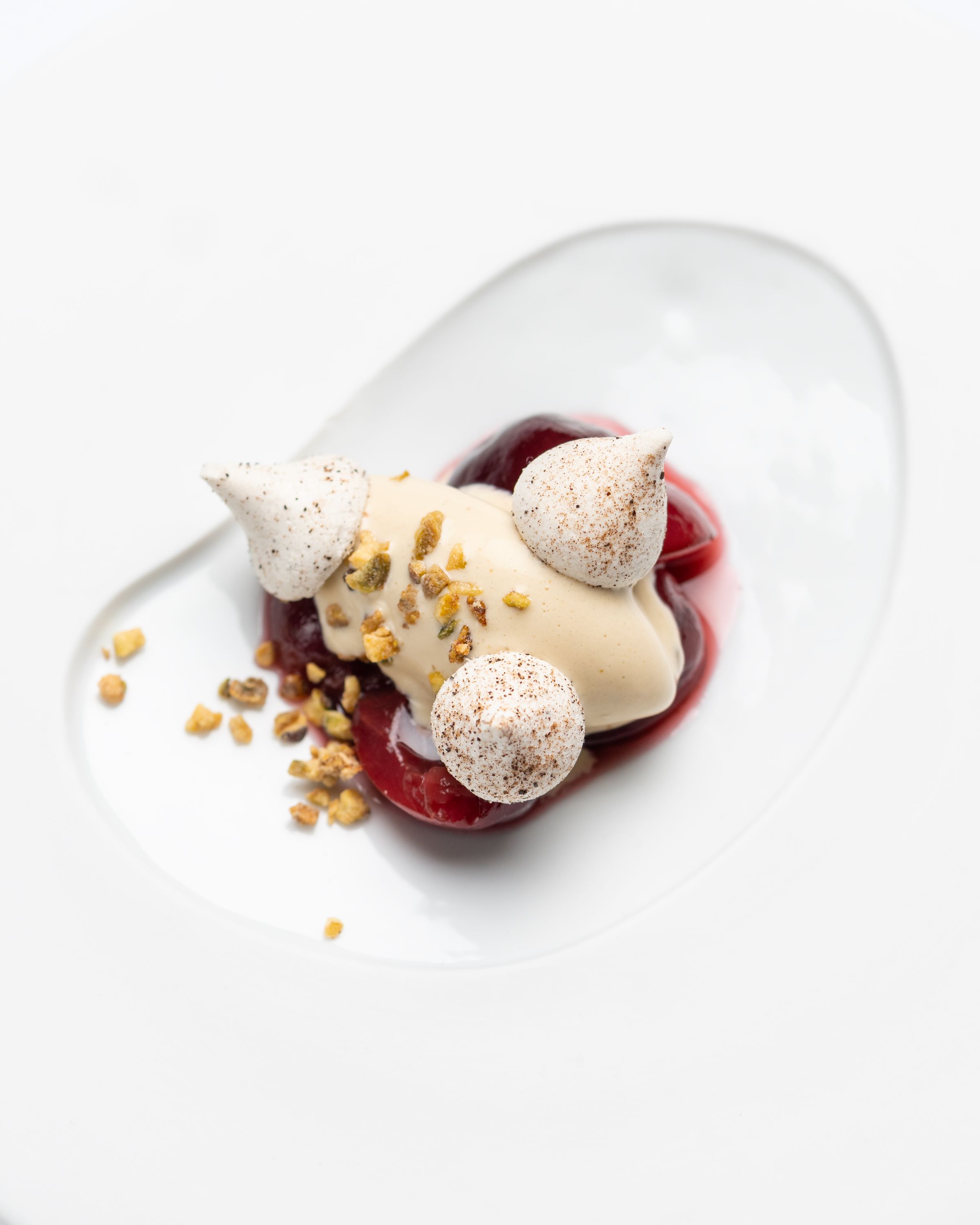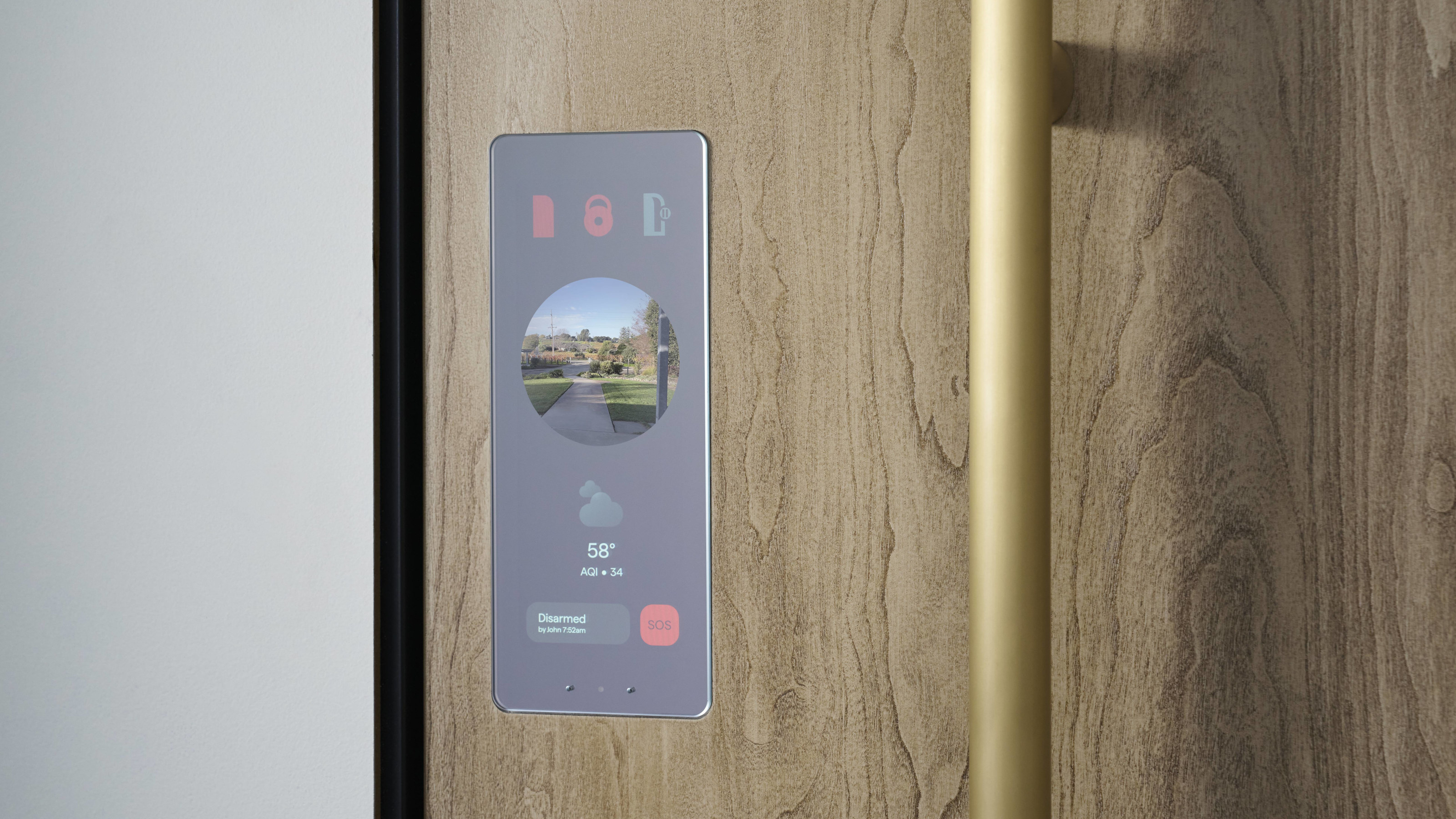Mourad Mazouz on how the fusion of high art and haute cuisine has kept Sketch at the pinnacle of London dining
'Opening the restaurant felt like something we’d drawn over and over again': Sketch founder Mourad Mazouz tells Wallpaper* about the importance of artistic and culinary fusion

Mourad Mazouz, 61, was born in Algeria and moved to Paris when he was 15. He opened Au Bascou, his first restaurant in the French capital, when he was 27, and Momo in London in 1997. Sketch followed in 2002 with cuisine overseen by French chef Pierre Gagnaire but five years of fixing the structural problems of the Georgian building meant that the cost had ballooned to £12.5m by the time it opened, making it then London’s most expensive restaurant launch.
Though the ground-floor Gallery and first-floor Lecture Room and Library were initially savaged by critics, the Lecture Room won its third Michelin star in 2019. As the restaurant prepares to host its annual Art & Design exhibition, this year called ‘Dreamscapes’, Mazouz tell us how the fusion of high art and haute cuisine has kept Sketch at the pinnacle of London dining.
Inside the creative mind of Mourad Mazouz

Outside of Sketch
Wallpaper*: What was the story behind Sketch?
Mourad Mazouz: Claude Challe, one of the owners of Les Bain Douches, a famous nightclub in Paris, wanted to open the building on Conduit Street with me in 1998. I already had enough trouble running Momo, which I’d launched the previous year, so I told him that I did evenings, not nights. But it was a great site so we signed an agreement that was valid for three months, in the middle of which Claude decided to stay in Paris. Everybody from Marco Pierre White to the Saatchi Gallery wanted this building. But I didn’t know what to do with it or even what sort of cuisine I wanted to serve.
W*: Why did you call it Sketch?
MM: The original name of the project was Rubik's Cube, because I wanted to change the rooms every week. But I realised that wouldn’t make financial sense. A month before we launched we called it Sketch, because that’s what five years of getting the restaurant to open had felt like: something we’d drawn over and over again.

Sketch Pod Loos by Jean-Charles de Castelbajac
W*: Why do you think Sketch was not an immediate success?
Receive our daily digest of inspiration, escapism and design stories from around the world direct to your inbox.
MM: I tried to put too many things in the same place, which made everybody feel a bit lost. Was Sketch a restaurant, a club or a bar? There was dancing, but also eating and art. People felt that they were entering a very big, very luxurious building, and I was making them feel small – even people who felt confident in themselves. And you need to make people feel big. I didn’t do it on purpose; I was just trying to give so much to everyone and make them happy.
W*: How do you choose the artists for The Gallery?
MM: I mainly work with friends, such as the Stephen Friedman Gallery. They represent Yinka Shonibare, who transformed The Gallery in 2022, and also David Shrigley, who was the artist when the room was pink. India Mahdavi, who is also a friend, designed the room both times. We recently had a solo exhibition from Mr Doodle, which was the third collaboration with Pearl Lam Galleries. Pearl has been a customer of Sketch for years and one day we thought, why don’t we do a project together? It’s all about wonderful relationships and feeling a connection.

Sketch July 2023
W*: How often does the design of Sketch change?
MM: The idea is to the change the artist every two or three years. When we change the artist in The Gallery, we change all of the décor. When Sketch opened, I loved Pipilotti Rist and Bill Viola and was obsessed with video art, which was a lot easier to change and worked because there are no windows in The Gallery, so we could do 360-degree installations. At the moment I’m making The Lecture Room even more opulent. I’m re-introducing small tables for handbags, I have new trolleys for cheese and Champagne arriving and a big round table for service.
W*: Do artists eat at the restaurant?
MM: When we opened 22 years ago I thought that art people would be hedonists who loved their food, but give them green beans and grated carrots and they’re happy. I prefer designers to artists, because they are real craftspeople and I’m a total artisan. I have creative ideas, but I always keep my feet on the ground. I hope I stay that way.

Paul Cocksedge Chandelier installation
W*: How did the Dreamscapes exhibition come about?
MM: It's a mixed art exhibition to fit in with London Design Festival, Frieze, PAD London and London Fashion Week. The designer Paul Cocksedge has created a chandelier installation for the Glade. And the fashion designer Ida Immendorff and artist and fashion designer Jean-Charles de Castelbajac have been inspired by Sketch’s connection to the suffragettes. Ida is 23 while Jean-Charles is a little bit older than me. That mix of generations pleases me a lot.
W*: Who came up with the idea for the famous pod toilets?
MM: That floor was originally meant to be a bar. I woke up one morning and freaked out; I already had two bars in Sketch, why would I add another one? I said to my designer Noé Duchaufour-Lawrance that I wanted to fill the space with something that looked like a dozen eggs. He made them for me, but they were my idea. Everybody thinks they’re genius.

Sketch Pod Loos by Jean-Charles de Castelbajac
W*: How does the food differ between the Gallery and Lecture Room?
MM: Downstairs is more like a brasserie, so when you’re serving 200 customers a night you need people to recognise what they’re eating. But when you reserve a table at a fine-dining restaurant like the Lecture Room, you come for an experience, and you're ready for anything. We have a razor clam dish, which is a bowl of razor clams cut up in jelly. It’s not a classic seafood dish; it’s designed to provoke. When you take a risk like that, you give people a stick to beat you with.
W*: How has the London restaurant scene changed since you opened Sketch?
MM: I moved to London from Paris in 1994 because I had an English girlfriend. You could only find espresso in the little Italian sandwich places, and most of those weren’t very good. So that’s a good example. The restaurant scene of 22 years ago and now is like comparing night and day. London has become the food capital of the world because it was historically poor for eating out. It has opened up to global influences in a way that Paris never has, because the French think they are already the best at food. It’s the opposite with music. The British think they invented rock, which means the scene here is very blinkered. In Paris they realise that so many countries make amazing music and you can listen to something different every night.

Ida Immendorff installation in Sketch's entrance way
W*: Where do you like to eat out in London?
MM: I cook at my home in Marylebone a lot, or my girlfriend cooks. Or we go to Chiltern Firehouse – it’s next to where I live and a lot of our friends like it. I also enjoy Jikoni, on Blandford Street. It feels like a friendly neighbourhood restaurant, which is rare in Marylebone. The food is unique and very creative: a mix of Indian, Middle Eastern and African.
W*: How important is travel to you?
MM: I started in hospitality by working in a restaurant in Los Angeles. My plan when I opened my first restaurant in Paris was to sell it as soon as possible and use any profit to go travelling. Now I have a small house on Formentera in the Balearics, which is the only property I own. I'm also organising a trip for some friends to the Algerian desert in October, to Djanet, near the border with Libya and Niger. I was in the Saharan city of Timimoun not long ago, too. When I was growing up in Algeria, I only travelled from my village to Algiers. Now I’m finally discovering the country.

Ida Immendorff installation in Sketch's entrance way
W*: What are your future plans for Sketch?
MM: I want to re-do all the corridors with Ago Projects, the Mexican art gallery. I love what they do. But I love what they do today. If in two- or three-years’ time I see it everywhere, then maybe not.
W*: How do you stay relevant?
MM: I don't know if I will become a has-been one day, and maybe I am one already. I might have an idea because of something I saw at a museum five years ago. Somebody was talking to me yesterday about being able to retire and I said I don’t know what that means. I need to wake up and have something to do every day.
Sketch is located at 9 Conduit Street, W1S 2XG Dreamscapes runs from 12 September until 10 November sketch.london
Ben McCormack is a London-based restaurant journalist with over 25 years’ experience of writing. He has been the restaurant expert for Telegraph Luxury since 2013, for which he was shortlisted in the Restaurant Writer category at the Fortnum & Mason Food and Drink Awards. He is a regular contributor to the Evening Standard, Food and Travel and Decanter. He lives in west London with his partner and lockdown cockapoo.
-
 Sculptor Woody De Othello paints a Miami museum red for a show that ‘almost hugs you’
Sculptor Woody De Othello paints a Miami museum red for a show that ‘almost hugs you’The Miami-born, California-based artist opens his first museum exhibition in his hometown as an experiential journey through life and lifeless objects
-
 Alpine A390 GT: French, fast and fun. A sporting EV with a real sense of occasion
Alpine A390 GT: French, fast and fun. A sporting EV with a real sense of occasionAlpine doubles down on its fast electric credentials with the A390 GT, the French performance brand’s largest car to date
-
 Forget smart homes, Doma's 'intelligent' doors open at the sight of a familiar face
Forget smart homes, Doma's 'intelligent' doors open at the sight of a familiar faceYves Béhar and Jason Johnson have founded Doma, a tech start-up dedicated to seamlessly integrating tech into your daily life